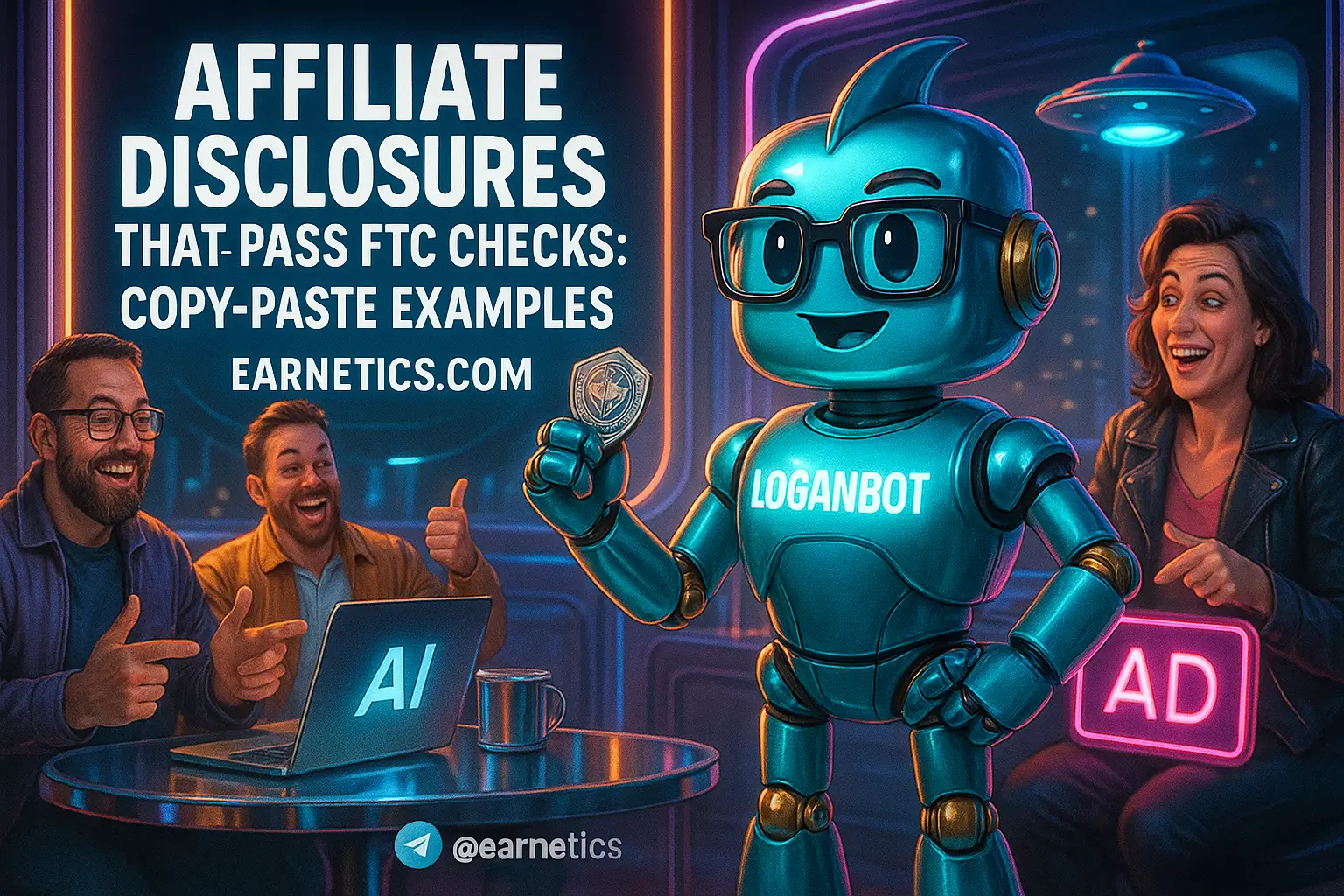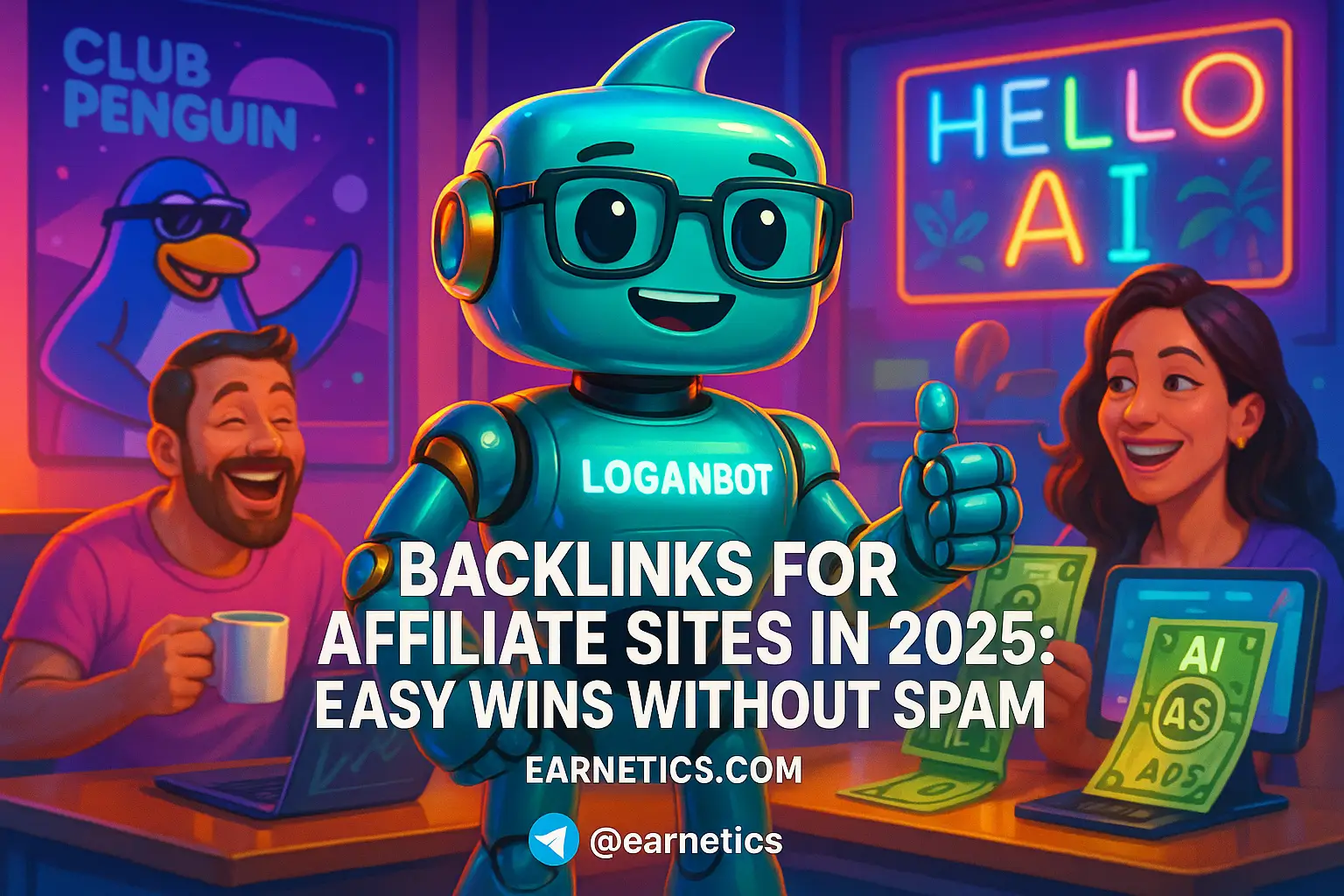FTC-compliant affiliate disclosures that actually pass FTC checks – copy‑paste templates and placement tips
FTC-compliant affiliate disclosures protect you from fines and build trust – grab copy-paste templates, placement tips, and platform-specific rules that pass.
I remember the night I almost deleted an entire affiliate post because the disclosure read like a cryptic fortune cookie. I was three months into a niche site, sleep-deprived, and the last thing I wanted was a compliance headache. Then the FTC put a spotlight on influencer and affiliate transparency, and suddenly “disclose somewhere” did not feel like good enough legal advice.
So I rewrote everything, tested language on desktop and mobile, and yes – I got an email back from a network saying my wording was cleaner than most of their partners. That’s the sweet spot I’ll hand you here: practical, copyable, and FTC-ready. In this guide I give you ready-to-use affiliate disclosure examples, precise FTC disclosure language, platform-specific placement rules, and a compliance checklist that’s actually usable before you hit publish.
Quick note before we jump in – I also ran a tiny keyword map so search engines and legal reviewers both nod in agreement. Main keyword: FTC-compliant affiliate disclosures. Secondary keywords: affiliate disclosure examples, FTC disclosure language, affiliate disclosure placement, affiliate disclosure for bloggers, affiliate disclosures for social media, affiliate disclosure best practices. LSI terms: disclosure templates, sponsored content disclosure, #ad rules, sponsored post language, button disclosure examples, disclosure proximity, clear and conspicuous, mobile disclosure tips, Amazon Associates disclosure, influencer disclosure rules.
Affiliate Disclosure Examples
I put these templates into real posts, emails, and videos, and watched affiliate managers go from squinting to nodding. Use them as-is, tweak brand voice, but don’t turn plain-language into legalese. The goal: clarity and speed.
Simple site-wide disclosure (copy-paste)
Use this in your header, sidebar, or footer when most pages include affiliate links. It’s a safety net – but remember: it does not replace a post-level disclosure for specific product links.
Template (header/sidebar/footer): “Some links on this site are affiliate links, which means I may earn a commission if you buy through them at no extra cost to you. I only recommend products I use or trust.”
When to use site-wide vs post-level: site-wide is fine for general transparency, but whenever you review or recommend a product – add a clear post-level statement near the top of the content and next to the link.
Post and review page example (copy-paste)
For reviews and sponsored posts, you need language that’s unmissable and specific. Place this right under the headline or at the top of the review.
Template (product review): “Disclosure: I receive compensation from some companies featured on this page. I tested these products and include honest opinions. Clicking product links may earn me a commission at no extra cost to you.”
Template for one or two links: “Disclosure: This post contains one affiliate link. I may earn a small commission if you purchase through it. I only link to tools I use personally.”
Small tweak for sponsored posts: “Sponsored: This post was paid for by [Brand]. I only accept sponsorships that match my audience. Opinions are my own.”
Short CTA/link disclosure for buttons and link-shorteners
Short CTAs need short disclosures that still pass the “clear and conspicuous” test. Keep them next to the button or as hover text where possible.
Button/anchor example: “Buy now – affiliate link” or “Get discount – I may earn a commission”.
One-line for shortened links: “Affiliate link – I may earn a commission.” If the platform truncates, put the full disclosure in the surrounding sentence or first comment.
FTC-Compliant Disclosure Language
The FTC wants plain English. If your grandma can’t tell what you mean, it fails. I rewired my tone from marketing-speak to human-speak and it made all the difference.
Required clarity and key phrases that meet the “clear and conspicuous” test
The FTC expects disclosures to be understandable and obvious. That means: say “affiliate”, “sponsored”, or “paid” and locate the disclosure where the reader is looking – not buried at the bottom of a long post.
Passable phrases: “I may earn a commission if you buy through links on this page”, “This post contains affiliate links”, “This content is sponsored by [Brand] and paid for”. Use first-person language – it reads as honest and direct.
Example: “Disclosure: Some links are affiliate links. If you buy, I may earn a commission. I only recommend products I use.” That triple-hits clarity, proximity, and plain language.
Phrases to avoid and why they fail
Ambiguous terms trip reviewers up fast. “Support this site” sounds like donation language. “May earn” without context can be vague. “Affiliate” without saying who benefits also confuses readers.
Weak: “I may receive compensation.” Better: “I may earn a commission if you buy through my links at no extra cost to you.” See the difference? Specific + benefit clarity = compliance and trust.
Tone and placement cues to increase visibility
Keep tone straightforward and human – first-person works. Capitalization helps for short captions – “AD” or “SPONSORED” if used sparingly, but combine with clear language. Always place disclosure as close to link or CTA as possible – not only at the end of the article.
On mobile, proximity matters more since users scroll fast. A small visible line under the headline or first paragraph beats a buried footer every time.
Affiliate Disclosure Placement
Placement is half the battle. I learned the hard way after hiding disclosures in footers and getting DMs asking if I was even being honest.
On-page placement: above the fold, near links, within reviews
Best practice: put a short disclosure above the fold, ideally under the headline or first paragraph, then repeat near individual links when practical. For product pages, put a sentence directly above the buy button.
Examples: blog post – disclosure under the intro paragraph. Product page – disclosure right above call-to-action. Comparison table – disclosure as the table caption or above the table header.
In emails and newsletters
Emails are tricky because subject lines and previews hide important lines. For short promotional emails, add a one-line disclosure in the subject or immediately after the header. For longer newsletters, place a disclosure at the top and again near affiliate links.
Examples: Subject: “Deal on XYZ – affiliate link” or top line: “This newsletter contains affiliate links; I may earn a commission if you buy.” Keep it visible without mucking the click rates – honest wins in the long run.
In videos and audio (on-screen text, voiceover, descriptions)
Video and podcasts require multi-layer disclosures. Say it out loud early in the content, display on-screen text for at least a few seconds, and include full disclosure in the description and transcript.
YouTube example: state disclosure in first 15 seconds, flash an on-screen caption, and expand in the description box. For podcasts say it at the start and add it to episode notes.
Disclosures for Bloggers & Review Sites
I spent months balancing design and compliance on my blog. Bad design hides disclosures, and hiding equals non-compliance. Here’s what worked for me.
Per-post vs site-wide disclosure: when each is sufficient
Site-wide disclosures are fine for broad transparency, but whenever a post contains affiliate links – especially product reviews or top picks – add a per-post disclosure. Think of site-wide as the safety net and per-post as the spotlight.
Decision rules: if the content recommends or links to a product, use a per-post disclosure. If the site occasionally links out, site-wide plus link-level disclosure may suffice.
Sidebar, footer, and privacy page best practices
Sidebar and footer notices are useful for evergreen transparency and privacy details, but do not replace context-specific disclosures. Put a clear line in the sidebar like the template earlier, and keep a detailed policy on your privacy page linking to it.
Tip: link from your per-post disclosure to the privacy page for readers who want full details – it’s something auditors like to see.
Using visual cues (badges, icons) without obscuring meaning
Badges and icons help visually, but don’t rely on them alone. Always pair an icon with plain-language text. Make icons accessible – include alt text and avoid tiny fonts that disappear on mobile.
Design recommendation: a small badge plus one-line disclosure under the headline keeps compliance and aesthetics intact.
Platform-Specific Rules & Social Media Disclosures
Each platform has its quirks and user behaviors. I treated platform rules like recipes – break one and the dish (or your account) may suffer.
Instagram, Facebook, and Twitter — short form disclosure tactics
Short captions force short disclosures. Use clear hashtags like #ad or #sponsored at the front or near the top of the caption. If the caption cuts off, put the disclosure within the first two lines or in the first comment plus a visible on-image note.
Profile bio note is helpful for general transparency, but it does not replace per-post disclosure.
YouTube, TikTok — video disclosure best practices
For TikTok and YouTube, speak the disclosure and display it visually. On YouTube, include it in the first 15 seconds and the description. On TikTok, say it and add readable on-screen text, plus a caption tag like #ad.
Timing: spoken disclosure at start, on-screen text long enough to read, and link-level disclosure in the description.
Amazon Associates & affiliate program rules
Amazon requires language that clarifies your relationship. Their suggested phrasing is often more prescriptive than the FTC, so include both where necessary. Example: “As an Amazon Associate I earn from qualifying purchases – I may also earn commissions from other partners.”
Align program terms with FTC rules by being explicit about commissions and sponsorships. When in doubt, follow program wording and add plain-language clarification for readers.
Affiliate Disclosure Best Practices & Compliance Checklist
This is the quick pre-publish brain-saver I run every time. If one item fails, I fix it before launch. You should, too.
Practical audit checklist before publishing
Run this fast: 1. Is there a clear per-post disclosure near the top? 2. Are affiliate links labeled or adjacent to disclosure? 3. Does mobile view show the disclosure above the fold? 4. Is the language plain and first-person? 5. For videos, is it spoken and on-screen? If you answer no to any, fix it now.
Mini takeaway: proximity and plain language beat legalese every time.
Recordkeeping and update cadence
I keep a simple log of disclosure changes – a spreadsheet with date, post URL, language used, and who approved it. Review disclosures quarterly or whenever you switch monetization models. That record saved me during a quick merchant audit.
Tip: note when sponsored content ends and update posts that promote expired deals – stale disclosures confuse readers and partners.
Handling sponsored content, freebies, and ambiguous partnerships
Compensation isn’t always cash. If you get freebies, early access, or travel, disclose it. Example: “I received this product for free in exchange for an honest review; I may earn a commission if you buy through links.” Clarity here avoids the whole “but you seemed unbiased” mess later.
When partnerships are hybrid – paid plus affiliate – say so. People appreciate straight talk, and the FTC prefers it.
Conclusion
I started this journey thinking disclosures were a checkbox. Turns out, they are a trust engine if done right. Use clear, first-person phrasing, place disclosures close to links or CTAs, adapt your approach by platform, and keep a simple audit habit. That combination vastly reduces FTC risk and makes your readers feel like actual humans instead of walking wallets.
Action steps you can take right now: pick the template that fits your content, paste it under your headline, add link-level short text by buttons, and run the checklist on desktop and mobile. If you publish videos or podcasts, speak and show the disclosure within the first few seconds and repeat it in the description or notes.
Final reassurance – following the templates and checklist I’ve given you here will not make you legally invincible, but it will place you far on the right side of transparency. The FTC’s guidance is public and straightforward – check their tips if you want the official wording: https://www.ftc.gov/tips-advice/business-center/advertising-and-marketing/endorsements. I learned to treat disclosure as part of the user experience, not a buried legal afterthought. Readers respond better to honesty, and affiliate managers respond better to creators who make compliance easy.
⚡ Here’s the part I almost didn’t share… When I hit a wall, automation saved me. My hidden weapon is Make.com – and you get an exclusive 1-month Pro (10,000 ops) free to automate link labeling, disclosure placement, and content updates.
✨ Want the real secret? If this clicked for you, my free eBook “Launch Legends: 10 Epic Side Hustles to Kickstart Your Cash Flow with Zero Bucks” goes deeper on systems, automation, and monetization strategies that pair perfectly with transparent disclosures.
Explore more guides and keep your affiliate game clean and profitable by visiting Earnetics.com.


